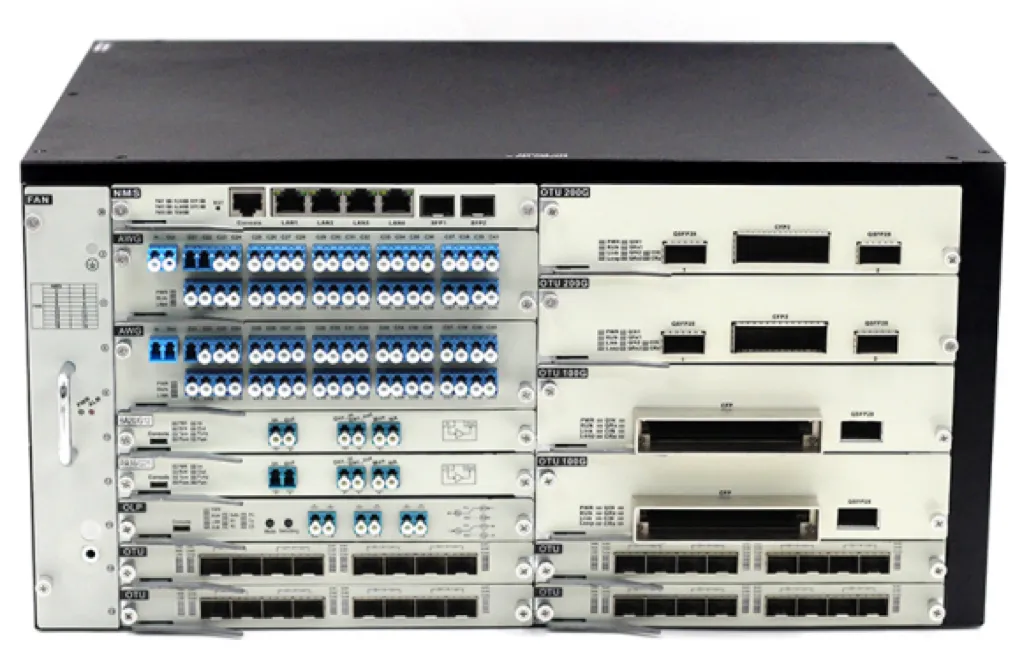In the rapidly evolving landscape of telecommunications, Wave Division Multiplexing (WDM) technology has emerged as a cornerstone for high-capacity optical networks. As data demands surge with the rise of 5G, IoT, and cloud computing, network operators are seeking smarter, more agile solutions to optimize performance. Enter the Optical Switch (OSW), a critical enabler that is redefining the capabilities of WDM systems. Let’s explore how OSW elevates modern optical infrastructure to unprecedented levels of efficiency and intelligence.
1. Dynamic Network Reconfiguration: Agility at the Speed of Light
Traditional WDM networks often struggle with rigid architectures, making capacity adjustments time-consuming and costly. OSW introduces unparalleled flexibility by enabling real-time, software-controlled rerouting of optical channels. Operators can now:
- Adapt to traffic spikesby instantly provisioning or redistributing wavelengths.
- Preempt congestionthrough automated load balancing across fiber paths.
- Perform hitless maintenanceby shifting services without downtime.
This “self-healing” capability transforms networks from static pipelines into living ecosystems.
2. Lossless Signal Integrity: Preserving Photonic Purity
Unlike legacy electro-optical conversion methods, advanced OSW solutions maintain signals entirely in the optical domain. This delivers:
- Near-zero insertion loss(<1 dB in cutting-edge models)
- Elimination of O/E/O conversion bottlenecks
- Extended reachfor submarine and long-haul applications
By preserving signal integrity, OSW ensures Q-factor stability across cascaded ROADM nodes.
3. Scalability Beyond Moore’s Law: Future-Proofing Networks
Modern OSW matrices support 3D MEMS or liquid crystal technologies that enable:
- Non-blocking port expansionsup to 1xN configurations
- Wavelength-selective switchinggranularity down to 6.25 GHz
- Multi-degree ROADM architecturesfor meshed network topologies
This scalability allows carriers to incrementally grow capacity without forklift upgrades.
4. Power of Programmability: SDN-Enabled Intelligence
When integrated with Software-Defined Networking (SDN) controllers, OSW becomes the linchpin for:
- Intent-based provisioningthrough open APIs
- AI-driven traffic predictionand preventive rerouting
- Sliceable transponder orchestrationfor 5G xHaul
Operators report up to 60% reduction in service activation times through these automation capabilities.
5. Energy Efficiency: Green Photonics Revolution
By eliminating power-hungry transponders for every switch event, OSW contributes to:
- 40% lower power per switched wavelengthcompared to electrical switching
- Passive cooling compatibilitythrough all-optical operation
- Carbon footprint reductionaligned with GSMA Climate Pledges
Case in Point: Tier-1 Carrier Transformation
A recent deployment by a global Tier-1 operator demonstrated OSW’s transformative impact:
- 70% faster disaster recoverythrough automated protection switching
- 35% CapEx savingsvia stranded capacity elimination
- 5-nines availabilityfor enterprise SLAs
The Road Ahead: OSW in the Coherent Era
As 800G/1.6T coherent optics push spectral efficiency limits, OSW is evolving with:
- Super-C band compatibility(1520–1620 nm)
- Flex-grid channelizationfor probabilistic constellation shaping
- Quantum key distribution integrationfor next-gen security
Conclusion: The Intelligent Optical Backbone
In the race toward zettabyte-scale networks, OSW has transitioned from a passive component to the neural center of intelligent WDM ecosystems. By delivering unmatched flexibility, efficiency, and programmability, OSW empowers operators to transcend traditional bandwidth constraints while slashing operational complexity. As we stand at the threshold of the Terabit Era, OSW isn’t just an advantage — it’s becoming the new baseline for competitive optical networking.



